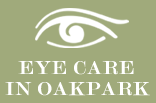
Managing Glaucoma: What Every Oak Park Patient Should Know
Glaucoma is a leading cause of vision loss, often developing silently and without early symptoms. At Oak Park Eye Center in Oak Park, IL, we specialize in early detection and personalized treatment to help patients manage this serious condition and protect their vision long-term.
What Is Glaucoma?
Glaucoma is a group of eye conditions that damage the optic nerve, usually due to increased intraocular pressure (IOP). When left untreated, it can cause irreversible vision loss.
Common Types of Glaucoma
-
Primary Open-Angle Glaucoma: The most prevalent form. It progresses slowly and without symptoms.
-
Angle-Closure Glaucoma: A medical emergency caused by sudden eye pressure increase.
-
Normal-Tension Glaucoma: Damage to the optic nerve occurs even when eye pressure appears normal.
Since the early stages often go unnoticed, routine eye exams are the most effective way to detect glaucoma before damage occurs.
How Glaucoma Is Diagnosed
A comprehensive eye exam at Oak Park Eye Center includes advanced tests designed to catch glaucoma early:
-
Tonometry: Measures the pressure inside your eyes.
-
Ophthalmoscopy: Evaluates the health of the optic nerve.
-
Visual Field Test: Identifies peripheral vision loss.
-
Optical Coherence Tomography (OCT): Provides detailed cross-sectional imaging of the optic nerve and retina.
Regular screenings are especially important for individuals over 40 or those with a family history of glaucoma.
Glaucoma Treatment Options in Oak Park, IL
While glaucoma can’t be cured, it can be effectively managed. Our treatment approach is tailored to reduce eye pressure and prevent further damage.
1. Prescription Eye Drops
These help lower intraocular pressure by reducing fluid production or improving fluid drainage.
2. Laser Therapy
Minimally invasive procedures like Selective Laser Trabeculoplasty (SLT) and Laser Peripheral Iridotomy (LPI) help enhance fluid outflow and reduce pressure.
3. Surgical Solutions
For advanced cases, procedures such as trabeculectomy or minimally invasive glaucoma surgery (MIGS) may be necessary to preserve vision.
The Importance of Early Detection
Glaucoma typically doesn’t present symptoms until significant vision has already been lost. Early detection through routine eye exams gives patients the best chance to maintain healthy vision and avoid permanent damage.
If you're in a higher-risk group—such as being over 60, having diabetes, high blood pressure, or a family history of glaucoma—routine screenings are even more crucial.
Your Local Experts in Glaucoma Care
At Oak Park Eye Center, we provide thorough glaucoma evaluations and personalized treatment strategies. Our goal is to help you maintain your vision and quality of life through proactive care and advanced technology.
📞 Call (708) 383-2150 or book your appointment online to schedule a glaucoma consultation today.
Frequently Asked Questions
1. What are early signs of glaucoma? Most cases begin without noticeable symptoms. Over time, vision changes may include blurred vision, tunnel vision, or halos around lights.
2. How often should I get checked for glaucoma?
-
Ages 40–54: Every 2–4 years
-
Ages 55–64: Every 1–3 years
-
Ages 65+: Every 1–2 years
-
High-risk individuals: Annually
3. Can glaucoma be reversed? No. Vision loss from glaucoma is permanent, but early treatment can slow its progression and prevent further damage.
4. Is glaucoma treatment covered by insurance? Most medical insurance plans cover glaucoma screenings and treatment. Our team can help you verify your coverage.
5. Can lifestyle changes help manage glaucoma? Yes! Healthy habits like regular exercise, a balanced diet, managing stress, and avoiding smoking can support eye health and help lower eye pressure.

We have extended hours in the evening on alternating Tuesdays, please call to confirm. We are open on Saturdays for your convenience.